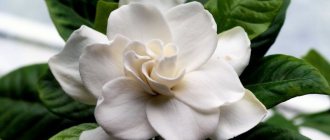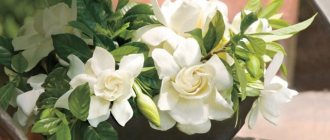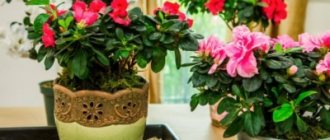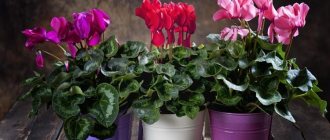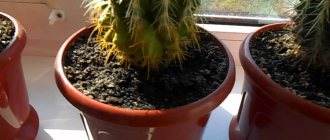The most beautiful indoor plant is the rooting gardenia, or jasminoides, jasmine (in Latin Gardenia jasminoides). The fact that the beauty requires constant, very attentive care does not frighten passionate flower growers: the efforts expended are more than rewarded.
Forming a large shrub or tree in nature, during the flowering period gardenias spread their magical aroma over many meters around. The flowers of the plant can surpass the most luxurious rose or peony.
A flower fit for an emperor
The Song Dynasty, which existed about a thousand years ago, was the first to tell about the beautiful gardenias that decorated the chambers of the emperors of China themselves. Although gardenias showed their full potential, even then Chinese gardeners did not allow the bush to grow, but achieved the most luxurious flowering, so they became bonsai - a spectacular, miniature tree with a bizarre crown shape. Appearing in Europe from the middle of the 18th century, gardenia was also limited in growth by pruning and shaping the crown.
When deciding to decorate your life with an amazing, rather capricious flower, take care to study the rules of care.
Special indoor varieties are now available that require minimal pruning, but still remain quite complex and demanding to care for.
How to care for gardenia at home
Gardenia jasmine indoor care at home photo of flowering
Lighting
The optimal location would be south and west windows. In the summer, in the heat of the day, the plant is moved away from the window, making the rays diffuse; in winter, on the contrary, they are brought closer so that there is enough light. It is important to avoid exposure to the hot scorching sun, so as not to cause burns or leaf fall.
Air temperature and humidity
The life cycle of a plant in natural conditions dictates its own rules in maintaining air temperature over the seasons. In summer, temperatures up to 21–24 °C during the day and at night up to 15–18 °C are allowed. In winter, a decrease to 16 °C is possible, the minimum permissible air cooling is 10 °C.
- It is difficult to maintain coolness in the summer, but with the advent of air conditioners, the task has become easier.
- If you ventilate the room by opening the window, move the flower away from the flow of cold air. Exposure to a draft can cause flower buds and flowers to fall off, as well as newly formed flower buds. A similar effect is possible with a lack of moisture, dry air with low oxygen content.
- It is advisable to regularly spray the plant on the leaves with a fine spray bottle.
- The beauty loves moist air, help the plant: place the pot on a tray with moistened pebbles or expanded clay. Be sure to ensure that the water does not touch the bottom of the pot.
- In addition to regularly spraying the leaves, wiping the leaves with a damp cloth is useful. By removing dust, you promote the complete absorption of oxygen from the air, the full processes of air exchange and photosynthesis in the leaves.
The flower will have a healthy appearance, rich color and will never get sick with careful attention. A warm shower has a beneficial effect on the condition of the plant, but you should cover the soil in the pot with a bag so as not to over-moisten it.
How to water
For irrigation, use settled water at room temperature. It’s great if the water is filtered or melted or rainwater.
- In spring and summer, keep the soil moist, avoiding the accumulation of moisture in the base of the pot. Proper watering helps maintain the strength of the plant at the stage of preparation for flowering and directly during it.
- In winter, flower growth slows down and the need for moisture decreases - reduce watering. Remember: if the soil is waterlogged, you risk losing the flower due to root rot, which can spread to the entire plant.
Gardenia likes acidified soil, so you need to add citric acid to the water for irrigation: a couple of grams per 1 liter of warm, settled water, which promotes the absorption of nutrients from the soil. Alternate watering with plain water and acidified water about three times to the fourth.
Feeding
- Feed gardenia twice a month with complex fertilizers for azaleas or ornamental flowering plants, following the manufacturer's recommendations.
- The flower responds well to foliar fertilizing with iron-containing preparations and magnesium sulfate, which can be done weekly. Such procedures can be continued even in winter, especially if you notice lightening of the leaves (chlorosis).
When does gardenia bloom?
The plant blooms from July to October, producing new flowers every week. To maintain decorativeness and stimulate flowering, it is recommended to prune faded buds.
Lifespan
Wild jasmine gardenia lives 15-20 years in its natural habitat. At home, this period is reduced to 10 years. If the care and premises do not meet the requirements of this rather capricious flower, then the life expectancy will be no more than a year. Young plants grow and bloom well, so many recommend not keeping them for more than 4 years, but growing several young gardenias at once.
Gardenia after purchase
- If you bought a gardenia in bloom, do not rush to replant it immediately: after replanting, the buds will most likely fall off.
- You can enjoy the beautiful appearance of the plant and, after three to four weeks, transfer the plant to a new pot with more suitable soil.
A feature of the soil in which sold plants grow is its one-time use: the nutrients present are quickly absorbed, usually they are enough to maintain the plant in a blooming state throughout the current season.
This soil contains a lot of peat, is very loose, and does not retain moisture well. Plus the pot quickly becomes very small. After purchase, it is best to transplant the gardenia into a spacious pot with nutritious soil for gardenias or azaleas, placing a drainage layer of small pebbles or expanded clay at the bottom.
The plant is watered and allowed to stand, then carefully handled, trying not to disturb the roots. This procedure will be painless, even if the gardenia is blooming. But it is best to replant in the spring, before flowering begins. A month and a half after transplantation, feeding is resumed.
What to do with gardenia after purchase, watch the video:
Soil for replanting
Take soil for gardenias, azaleas, rhododendrons or any ready-made soil mixture with an acidic reaction. Check with the flower shop what kind of soil they offer you: a neutral or alkaline environment will not suit the plant.
Blooming jasmine beauty
Flowering of jasmine gardenia begins in March and continues until September. First, the plant prepares for this process, then buds appear in April-March. During the flowering period, you cannot replant, move or move the flower. Otherwise, the plant will drop its flowers. They bloom in turns, so flowering often lasts two months. A blooming flower stays on the bush for about 4 days. After it has bloomed, it needs to be cut off so that new flowers can begin to form.
Transplanting gardenia
The flower grows over time, completely filling the space in the pot with its roots. Roots bursting out will be a sign of the need to urgently replant the plant. If this is not done, the plant will stop developing, stop blooming, or even begin to get sick and lose its decorative effect.
- Prepare a wider and deeper pot and place small pebbles at the bottom as a drainage layer.
- Sprinkle a layer of azalea soil on top.
- Carefully remove the pot from the azalea's roots, pressing and twisting it lightly to better separate it from the soil inside.
- Place the gardenia vertically in a new pot, sprinkle the remaining soil on the sides.
- You can remove a couple of centimeters of old soil from above to replace it with fresh soil. Do this with extreme caution, being careful not to damage the roots.
- After transplanting, the gardenia is watered and excess water is drained from the pan.
If the gardenia was stressed before transplanting, gentle pruning will be needed: cut off any existing unopened buds and flowers to make the plant take root more easily. After transplantation, protect the flower from direct sunlight and drafts. In a week or two, the root system will recover from the damage received and the plant will take root.
Another video will tell you how to replant gardenia:
Pinching and pruning gardenia
- They begin to pinch gardenias from the second year of life.
- To do this, cut off the tops of the shoots above the third pair of leaves with scissors in order to increase the branching and splendor of the crown.
- Pruning is necessary when removing dry, unsightly branches and when forming the correct shape of the crown.
- Thickening branches that grow unevenly are cut off, and branches that are too long are shortened.
- Faded flowers and dried buds are also cut off.
Gardenia tolerates pruning well, quickly pushing out new shoots instead of old ones.
How to form a gardenia bush, look at the video:
It is important not to be afraid to prune in a timely manner so that the bush develops evenly and remains well-groomed. The compact shape of the bush is maintained by constantly pinching the tops of the remaining shoots and pruning the branches at least once a year.
Gardenia bonsai
Gardenia bonsai photo
- The plant can be shaped into a bonsai style.
- To do this, form a central shoot, constantly pinching all the tops and cutting out excess branches.
- The trunk of the plant will become thicker every year, and the branches will be rejuvenated by radical pruning.
- It is important to prune before the end of autumn so that flower buds have time to form. Then the gardenia will annually delight you with its incomparable flowering on a bonsai-style mini tree.
Propagation of gardenia by cuttings
Gardenia cuttings photo
Cut branches can be rooted. There should be several leaves on the cuttings. Place the cuttings for a day in water with a dissolved root formation stimulator (kornevin, heteroauxin).
Next, you can root the cuttings in water or plant them in moist nutrient soil. The second method is preferable, since roots form faster and more intensively. The leaves are cut by a third to reduce moisture evaporation.
Rooting gardenia cuttings in water photo
If rooted in water, when the roots appear, transplant the young plant into a pot with a light nutrient substrate. Further watering will be needed regularly, but without excess. The soil should remain moist without stagnant water. Lighting needs to be diffused; choose western or eastern windows. Seedlings obtained from cuttings will bloom next year.
The video will clearly show you how to propagate gardenia from cuttings:
The South Asian beauty gardenia in natural conditions loves warm, acidic, breathable soil and soft sun - by creating similar conditions for your favorite gardenia, you will achieve magnificent flowering and a healthy appearance of the flower all year round.
Landing
In order for jasmine gardenia to grow and bloom successfully, it is necessary to use acidic soil and a pot that should be 1.5-2 cm larger than the root system of the plant. It is also important to comply with all care conditions.
Priming
Jasmine gardenia loves acidic soil, but in alkaline and neutral soils it hardly blooms. You can buy ready-made soil for it; for example, soil for azaleas is suitable. The finished mixture is made on the basis of coniferous peat and heather soil.
You can learn more about the necessary soil and fertilizers for gardenia in this article.
Growing gardenia from seeds
Gardenia seeds photo
Large gardenia seeds can be easily planted one at a time in separate cups, so as not to have to pick them later. But many gardeners prefer to sow in a common container in order to take up less space in the first month of growing. Everyone chooses what is more convenient for them.
- Planting depth is 1 cm, the distance between seedlings is 2-3 cm.
- The sown seeds are sprayed with a spray bottle and covered with film.
- In such a mini greenhouse, the plants will sprout within three weeks.
- Maintenance consists of maintaining constant soil moisture (there must be drainage to prevent stagnation of water) and regular ventilation of the greenhouse.
Gardenia from seeds photo seedlings
- If sowing was carried out in a common container, at the stage of 3-4 true leaves, the plants are planted in separate containers, pinching off the central root, and still covered with bags or transparent jars.
- 7-10 days after transplantation, fertilizing is carried out with a complex preparation for azaleas.
When the seedlings grow up, they are gradually accustomed to open space by removing the cover.
Description
The plant develops bush-like, and in open ground can reach a height of 2 m. In indoor conditions, the bush grows approximately 50 cm.
Jasmine Gardenia Leaves:
- glossy;
- dark green;
- oval with pointed ends (up to 10 cm long).
Snow-white double flowers reach a diameter of 7-10 cm. They exude a pleasant, subtle aroma of jasmine.
Photo
Here you can see a photo of jasmine gardenia:
Mistakes in gardenia care and common problems
Why doesn't gardenia bloom?
Why gardenia does not bloom, what to do
The flower is quite demanding in terms of maintenance conditions. In order for the beautiful gardenia to bloom, you need to maintain a maintenance regime according to the seasons. A period of rest in cold weather is required with a decrease in air temperature to 16-18 ° C and moderate watering. In spring, the air temperature is slowly increased and maintained moderate, no more than 24°C.
Gardenia may not bloom due to the incorrect composition of the soil, or rather its acid-base reaction. You need soil with a slightly acidic reaction. Remember: frequent watering causes the soil to become alkalized. The appearance of excess salt can be judged by the presence of white deposits on lumps of earth and the sides of the pot. The solution to the problem is to urgently replant the flower in the ground for gardenias or azaleas and alternate watering with acidified water and simple water.
Good lighting is also important, without which the plant will not produce flower buds.
Gardenia will not bloom if drastic pruning is done in winter or spring and flower buds are cut off. Prune the bush immediately after flowering so that the plant has time to lay flower buds for the next season.
Gardenia leaves are falling
The problem occurs under two circumstances: insufficient watering and exposure to a draft. In both cases, the plant experiences stress, which results in a defensive reaction - dropping leaves.
Keep your gardenia cool by keeping the plant away from cold air coming from a window or open door.
Gardenia leaves turn yellow and black, and then fall off
Why do gardenia leaves turn yellow, turn black and fall off? photo
Gardenia leaves begin to yellow and turn black en masse as a result of constant overwatering: the plant becomes sick with root rot, unable to cope with the attacking putrefactive bacteria.
- To help the beauty, you will need to replace the soil and disinfect the pot.
- Be sure to trim diseased branches, carefully inspect the roots and remove damaged areas.
- After repotting, treat the plant with phytosporin biofungicide as directed or with chemical fungicides (Recommended fungicides include myclobutanil, thiophanate-methyl, chlorothalonil, propiconazole, triforin).
- Keep the soil moist by watering small amounts regularly.
- Do not allow the soil to become waterlogged and water to stagnate in the pan!
Gardenia leaves turn black, but do not fall off
Why do gardenia leaves turn black photo Sooty fungus
Another reason for blackening of leaves is the spread of sooty fungus on the surface of the leaf. Here the problem arises due to the plant being damaged by sucking pests. Help - treatment with insecticides 4-5 times at intervals of 5 days, wiping the leaves with soapy water to wash off soot deposits.
Gardenia leaves are turning yellow
Gardenia leaves turn yellow, what to do
Pale and unhealthy yellowness of the leaves indicate the appearance of chlorosis. This is a physical disease that indicates iron deficiency. Poor absorption of the element is facilitated by alkalization of the soil (this has already been discussed; we use soil for azaleas or gardenias and water it with acidified water).
- To prevent gardenia from turning yellow, regularly fertilize with iron-containing preparations (Micro-Fe or Ferovit).
- Experienced flower growers advise immediately after planting to “drive” several nails into the ground, which, as they rust, will replenish the lack of iron in the soil.
- The second essential element for gardenia is magnesium. Without it, gardenia leaves also turn yellow. Magnesium sulfate will help compensate for the lack of microelement. Foliar feeding is carried out with a solution in a concentration of 2 g. per liter of water every 1-2 weeks
